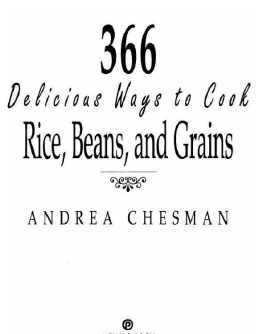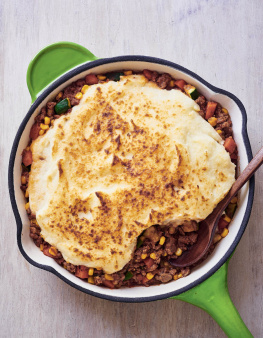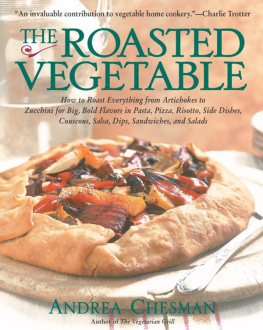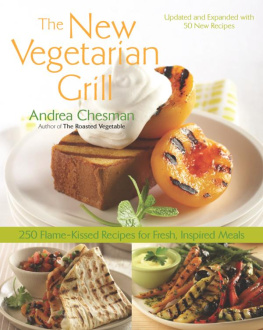Pickles and Relishes
Andrea ChesmanThe mission of Storey Publishing is to serve our customers by publishing practical information that encourages personal independence in harmony with the environment. Excerpted from
Pickles & Relishes by Andrea Chesman
Wood engravings by Charles Joslin
Cover design by Carol J. Jessop (Black Trout Design) 1984 by Storey Publishing, LLC All rights reserved. No part of this bulletin may be reproduced without written permission from the publisher, except by a reviewer who may quote brief passages or reproduce illustrations in a review with appropriate credits; nor may any part of this bulletin be reproduced, stored in a retrieval system, or transmitted in any form or by any means electronic, mechanical, photocopying, recording, or other without written permission from the publisher. The information in this bulletin is true and complete to the best of our knowledge. All recommendations are made without guarantee on the part of the author or Storey Publishing.
The author and publisher disclaim any liability in connection with the use of this information. For additional information please contact Storey Publishing, 210 MASS MoCA Way, North Adams, MA 01247. Storey books and bulletins are available for special premium and promotional uses and for customized editions. For further information, please call 1-800-793-9396. Printed in the United States by Walsworth Publishing Company Chesman, Andrea Favorite pickles & relishes / by Andrea Chesman
A Storey Publishing Bulletin, A-91
ISBN 978-0-88266-334-0 Whether sweetly piquant, mouth-puckeringly sour, or flaming hot and pungent, pickles and relishes bring zest to the table. They enliven mundane meals, brighten salads, add panache to picnics and potluck suppers, and provide very special gifts.
And with modern methods, it takes just a few hours in the kitchen to transform the seasonal bounty of your garden into a year-round source of pickled delicacies. Most of the recipes that follow are for fresh-pack pickles: produce prepared and packed raw into jars. Often vegetables are short-brined salted and allowed to stand for a few hours before packing. This makes them crisp. Then a boiling syrup or brine is poured over them. The jars are sealed and processed briefly in a canner, unless they are to be refrigerated or frozen.
Also included are recipes for traditional brined pickles, the ones you used to find in big crocks at the general store. In this method the vegetables, most often cucumbers, are cured for several weeks in brine before being packed into jars and processed or refrigerated. Brining is a fermentation process. It works best at 70 to 80F. Bacteria generate lactic acid from sugars in the vegetables, which gives the cured pickles a distinct, sharp flavor. 

Ingredients
The difference between a good pickle and a great one is usually the freshness of the ingredients.
Select young or even slightly immature, unbruised fruits and vegetables. Ideally they should be harvested early in the day, before the sun wilts them, and processed immediately. Since this isnt always possible, chill your produce quickly and thoroughly to ensure a crisp pickle. This is particularly important with cucumbers. If you dont have a garden, buy from local farmers, roadside stands, or farmers markets. If you must buy from the supermarket, avoid fruits and vegetables that have been waxed.
No matter where it comes from, always wash and drain produce thoroughly before use. Cucumbers come in two types, pickling and slicing. A good pickling cucumber is thin-skinned and small. It may be warty. Slicing cucumbers, when still small, are acceptable for sliced pickles such as bread and butters, and they are fine in relishes, but they rarely make good dills. For the inevitable overgrown cucumbers hiding in the garden, try the recipes for Sunshine Pickles on page 8.
Relishes are also a forgiving pickle. You can frequently use slightly overgrown or undermature produce with good results. Most pickle recipes call for vinegar, salt, herbs and spices, water, and a sweetener. It is best to use commercially made vinegars. To safely preserve pickles, the vinegar must have 5 percent acetic acid, and homemade vinegar may not be strong enough. White vinegar is most commonly used because it does not color the pickle. Cider vinegar has a rich, somewhat mellow flavor and less bite. Cider vinegar has a rich, somewhat mellow flavor and less bite.
It is preferred for many sweet pickle and chutney recipes. Malt vinegar, with a delicate, almost sweet flavor, is used in a few recipes. While you may substitute one vinegar for another (as long as it is 5% acetic acid), keep in mind that it will change the flavor. Salt both flavors and preserves. It preserves first by drawing water from the food to make it crisper, and second, by creating a hostile environment for microorganisms. Always use pure pickling salt and measure exactly.
The traditional pickling herbs and spices are dill, mustard seeds, celery seeds, garlic, pepper, cloves, and prepackaged mixed pickling spices. But the seasoning possibilities are endless, and recipes here include summer savory, basil, fennel, coriander, tarragon, hot pepper, and nutmeg, to name just a few. Herbs and spices must be fresh and, if you want a clear brine, they should be whole rather than ground. Many recipes call for tying them into a cloth bag for easy removal. Cheesecloth, muslin, and stainless steel tea balls work well, too.
Equipment
Always use stainless steel, glass, or ceramic pans, bowls, and utensils.
The salts and acids in pickles react with metals to produce an off-flavor. A food processor is a great timesaver and gives uniform results, thus improving the texture of the pickle. Mason jars with two-piece lids are the most readily available. The dome lids cannot be reused, but the screw-bands can. Old-fashioned bail-wire jars are no longer recommended for use when canning. For slow-brined pickles, glass, plastic, or ceramic crocks are useful.
Wash containers thoroughly in soapy water, rinse, then sterilize with boiling water. Whatever type of equipment you use, always follow the manufacturers directions in preparing for canning.
Canners
The United States Department of Agriculture recommends processing pickles in a boiling-water bath canner. A boiling-water bath is basically a large kettle in which jars are immersed, with a wire rack to keep jars from banging around and make them easier to get in and out. Match your canner size to your burner size. The canner should be no more than 4 inches in diameter wider than the burner on which it is heated.
Open-kettle canning, processing freshly packed jars in conventional ovens, microwave ovens, dishwashers and steam canners are not recommended. 
Pickling Tips
When packing jars, a wide-mouth funnel and wooden spoon pack vegetables neatly and firmly. Run a chopstick or spatula between food and side of jar to remove trapped bubbles. Add more brine if necessary to correct headspace. Yields are approximate: have an extra jar or two ready. After processing, place jars on a towel or wooden rack in a draft-free place.








